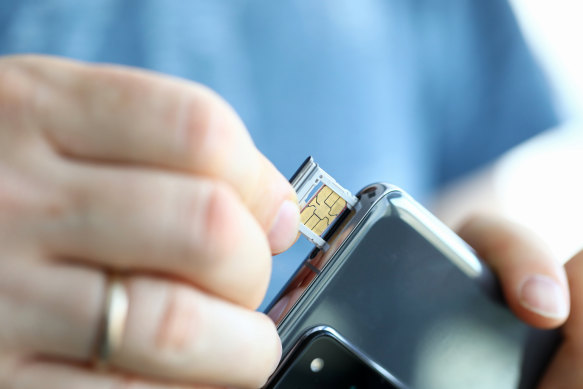Opinion
Why an eSIM is a game changer for overseas travel
Michael Gebicki
The TripologistOn September 6, 2024, I flew into Rome’s Fiumicino Airport, and as soon as I set foot in the airbridge, I was online with a new service provider. I hadn’t bought a new SIM card; it was as simple as activating a different eSIM using an app in my phone. Within seconds, I was retrieving emails, downloading WhatsApp messages and checking the price for a taxi from the airport to my hotel.
Until a couple of years ago, getting connected overseas meant buying a new SIM card and swapping out the existing card in my phone, and trying not to lose it or break that fragile little SIM card holder. An eSIM eliminates both those problems. Better still, it lets me keep my standard eSIM from my Aussie provider and use that to receive messages and phone calls, with the travel eSIM giving me access to cellular data and keeping my apps alive while avoiding the high cost of global roaming using my home SIM.

If you’re still swapping out your SIM card you’re doing it wrong.Credit: Getty Images
The advantages
The “e” in eSIM stands for “embedded”, and it refers to the hardware SIM built into many recent model smartphones. While these phones still have the slot for a standard SIM card, the eSIM is rewritable, which lets you change providers and add eSIMs for different regions without inserting a new SIM card. That’s a bonus for travellers since it gives you multiple SIMs in one phone. My current iPhone has four, although I could have up to eight, but only two can be activated at any one time. While a travel eSIM gives you data, it probably won’t come with a local number or the ability to send and receive text messages.
The process

Using an eSIM from a foreign service provider is much cheaper than an Aussie telco data roaming plan.Credit: Getty Images
First, you need to establish that your phone is eSIM compatible, and if you don’t already know, that’s a simple task for Google. You need to find a service provider for your travel eSIM, and there are several that specialise in eSIMs for short-term visitors. Google “Compare eSIMs for travellers to x”, and you’ll find various review sites. Some will shunt you towards a particular provider, others are more objective.
Some eSIMs are country-specific, others cover a whole continent or even most of the world. Since I’m visiting Morocco as well as Italy, I’m currently using Jetpac’s Globetrotter eSIM, which gives me 10Gb of data for $US21.25 ($31.75) and is valid for 30 days in more than 100 countries. After a week of use, it has never failed to deliver data, mostly at 5G.
In the past, I’ve also used Airalo’s eSIMs in several countries and never had a problem, although Jetpac’s eSIM is a better fit for my current needs and is cheaper.
Unless you’re using a mammoth load of data each day, using an eSIM from a foreign service provider costs far less than the daily data roaming plan offered by the major Australian telcos. Telstra charges between $5 and $10 a day for its International Roaming Day Pass, which delivers 2Gb of data a day. Optus Daily Roaming costs $5 for 5Gb of daily data. In a week of travel in Italy, I’ve used less than 5.4Gb of data on my Jetpac eSIM, at a cost of $14.25.
While local prepaid SIM cards deliver better value, these can be bought only on arrival, and the activation process can be complicated, as anyone who has ever bought a local SIM card in India or Italy will confirm. By comparison, eSIMs are the easiest way to stay connected when you travel overseas.
Activating your eSIM
Regardless of which eSIM you might use, the process is similar. Install the app of your chosen provider and buy whichever eSIM you need for your destination. Go through the installation process, and the app should walk you through it step-by-step. When you get to your destination, activate your eSIM. If this sounds complicated, there are usually YouTube videos that demystify the process. If you’re still not connected at the end of the activation process, try turning your phone off and on again. This is often required with Airalo eSIMs.
Next, you probably want to avoid horrendous global roaming charges, which means deactivating the cellular data feed to your usual phone number. On an eSIM-compatible phone, in the Settings app you can turn off cellular data on your primary SIM or eSIM while keeping that active for phone calls and messages while overseas. Whichever model phone you have, the support section on your phone maker’s website provides the necessary steps.
Try an eSIM on your next overseas trip, and you’ll never look back.
Sign up for the Traveller newsletter
The latest travel news, tips and inspiration delivered to your inbox. Sign up now.